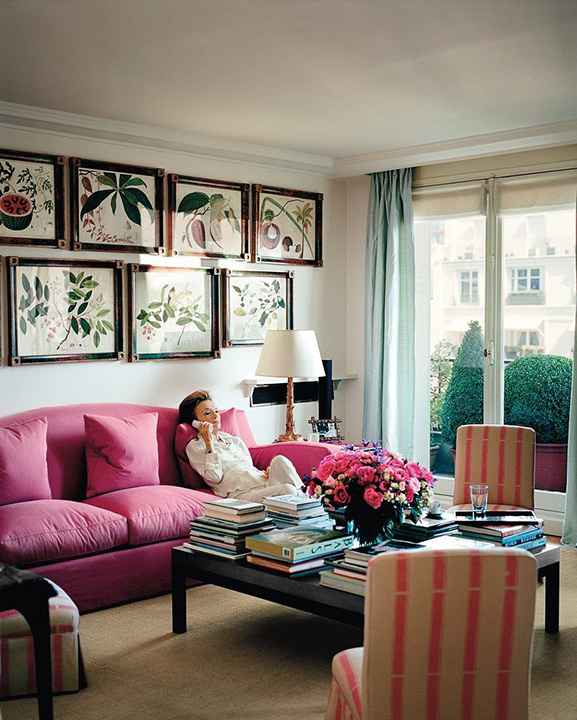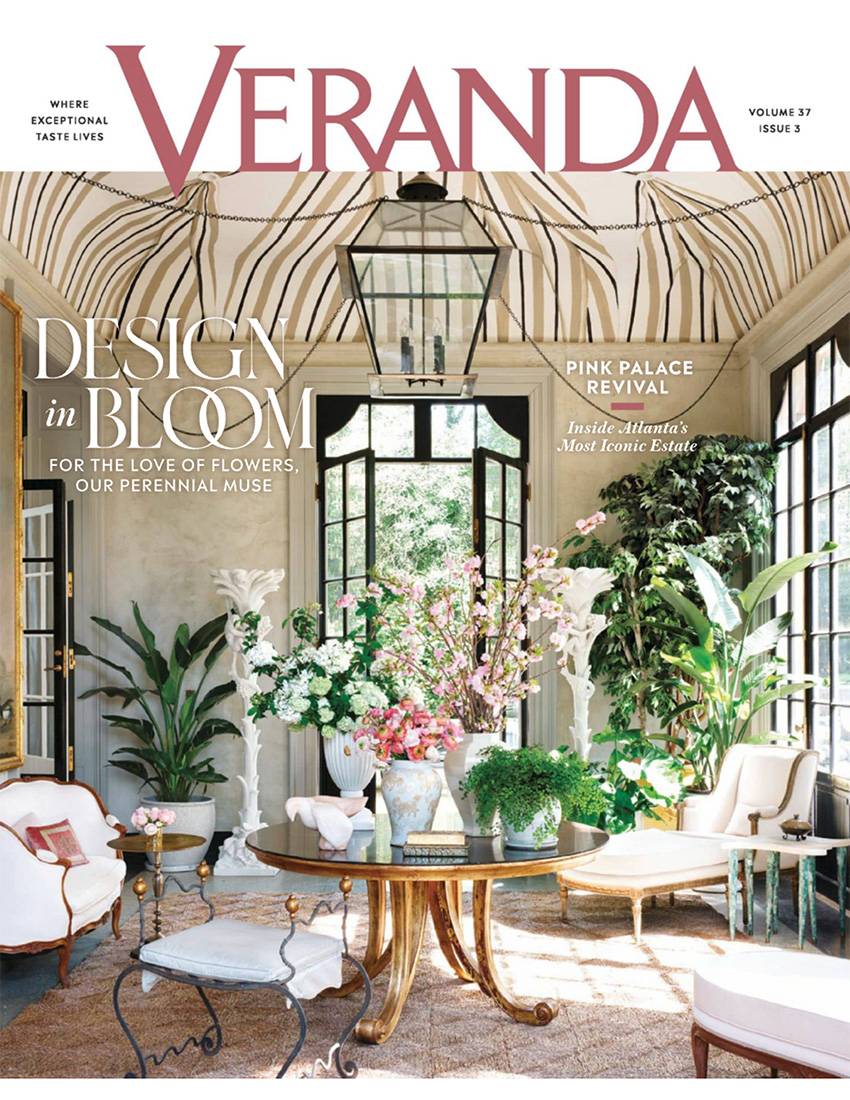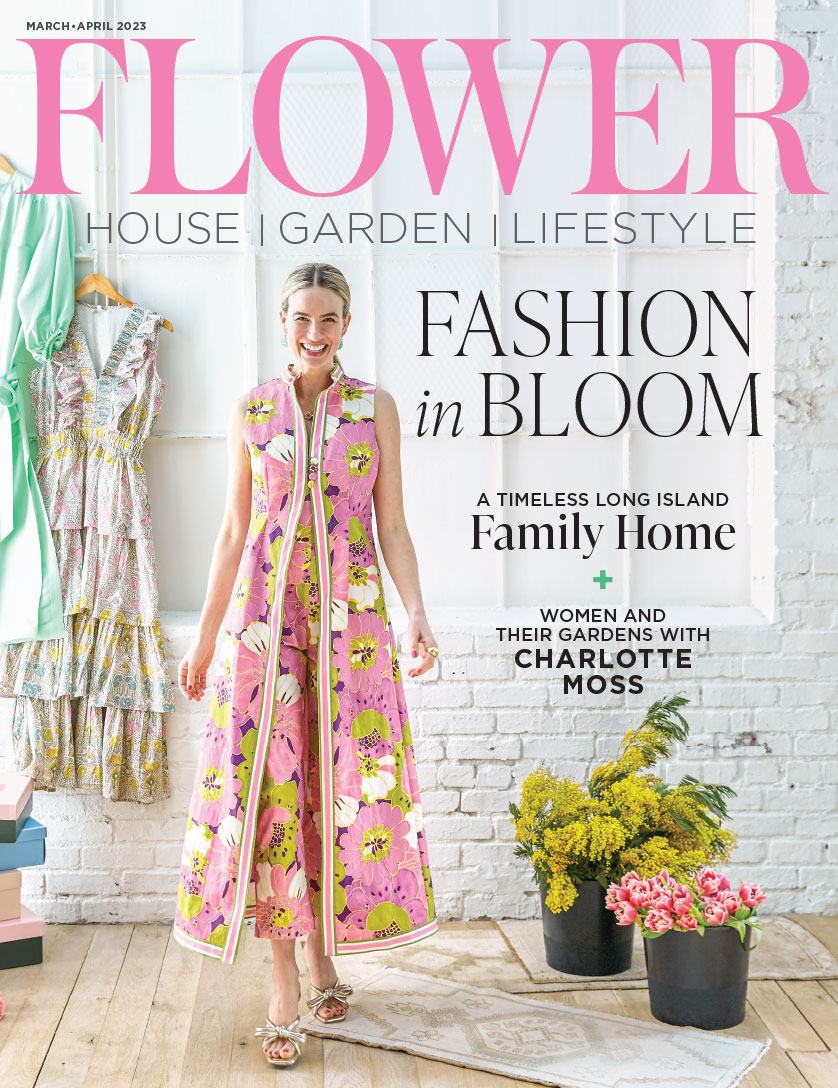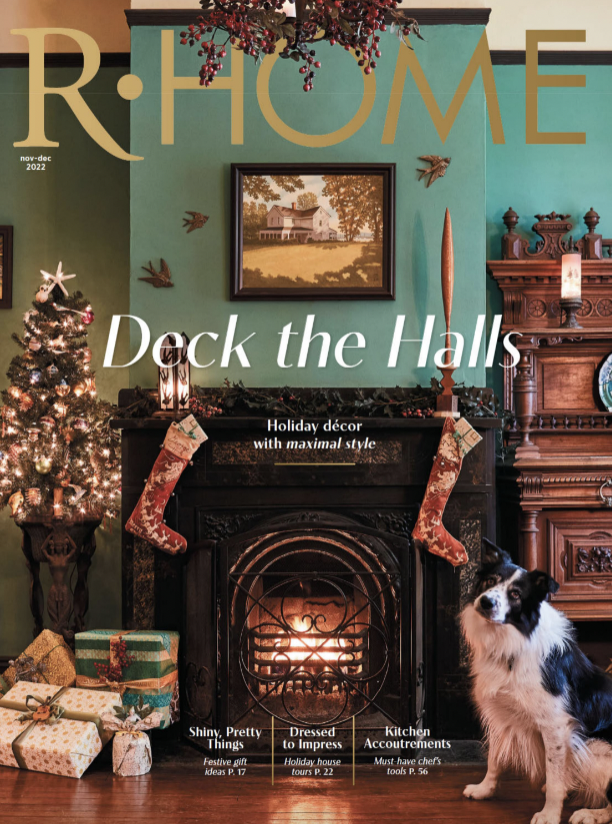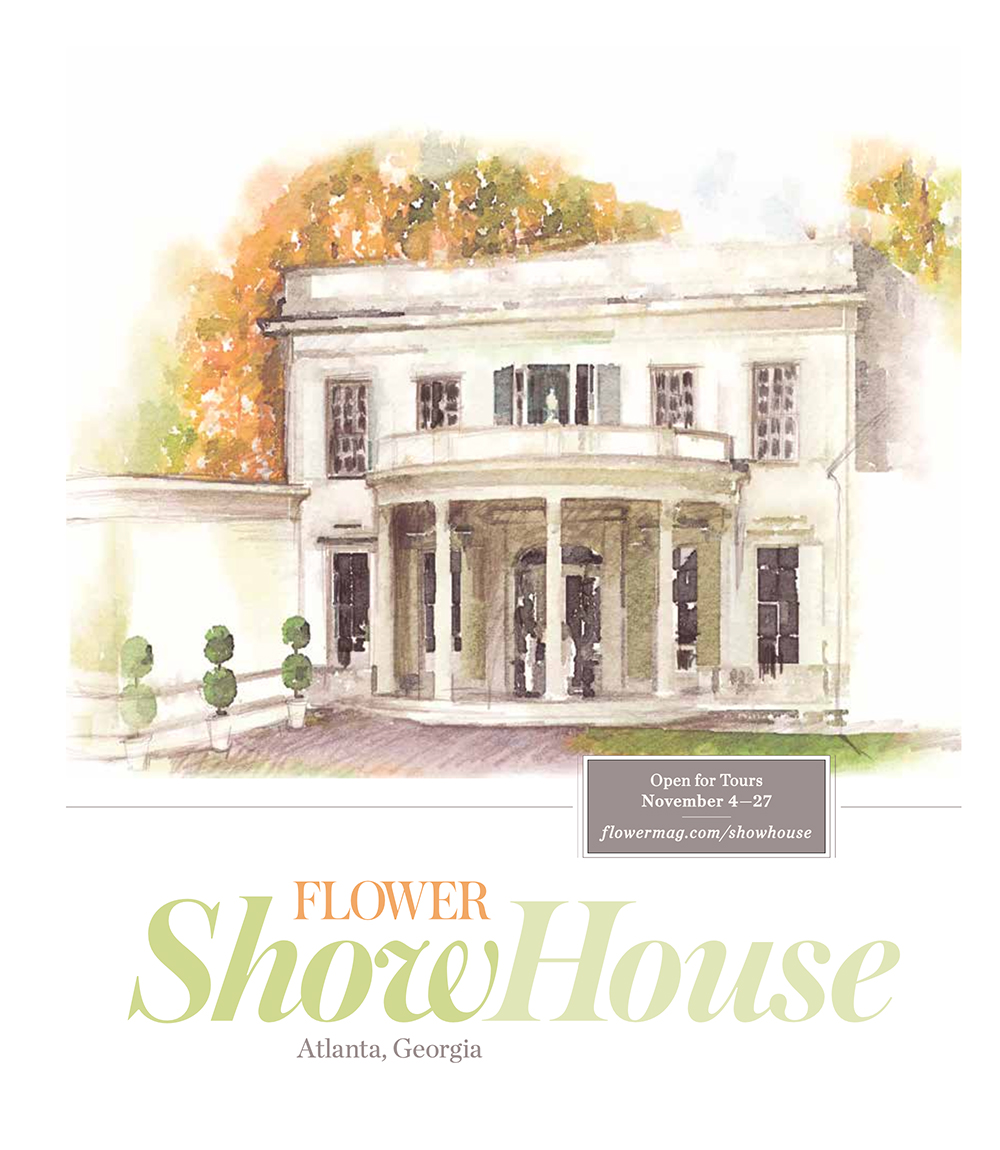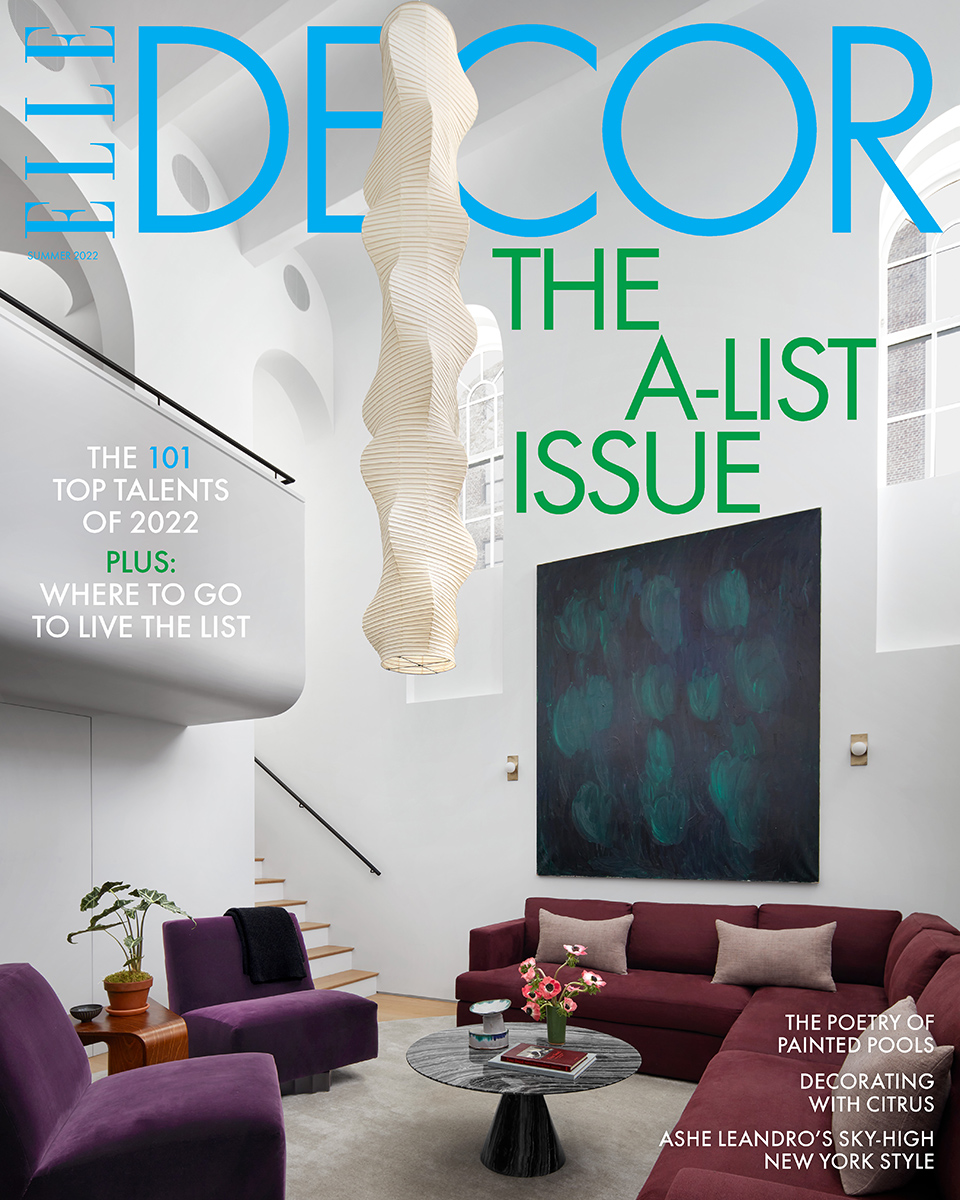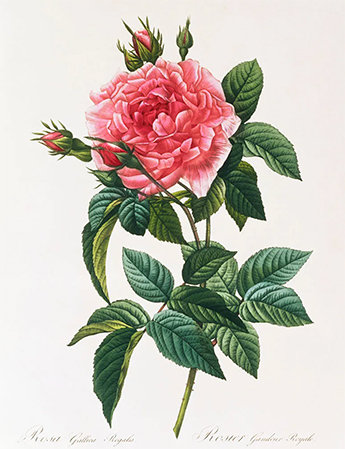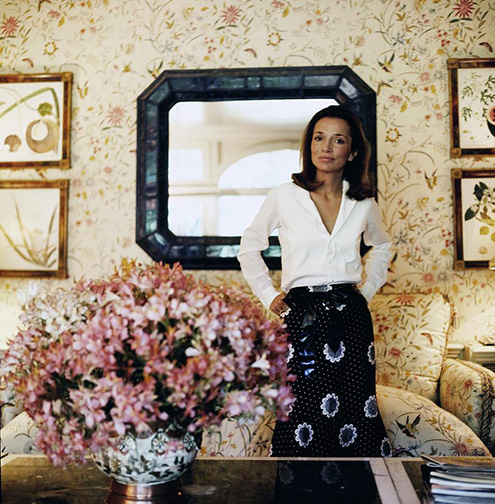
“Turville was a house of flowers. When you entered, it had a smell of straw rugs and burning fires mixed with the scent of sweet flowers.” – Lee Radziwill
Caroline Lee Bouvier Radziwill was known simply as Lee. It was a name that suited her perfectly: precise, direct, unfettered by convention and without excessive adornment. Lee was well-known for her sharp, unerring eye and elegant, easy style. Whether acting as an American envoy with her sister Jackie in India on behalf of the Kennedy White House, living abroad in grand style as Princess Radziwill, touring with the Rolling Stones, hanging with Warhol, or introducing the Maysles brothers to her Aunt Edie at Grey Gardens, Lee always remained steadfast to her inner compass of style. Nothing she put together was ever too much or, conversely, not enough. This was equally true of her decorating as it was of her fashion. The wonderful homes Lee made throughout her life were based on principles of tradition, but enriched by her taste for the singular and exotic, and buoyed by a breezy, airy, lightness that revelled in all things alive and beautiful and flowering.
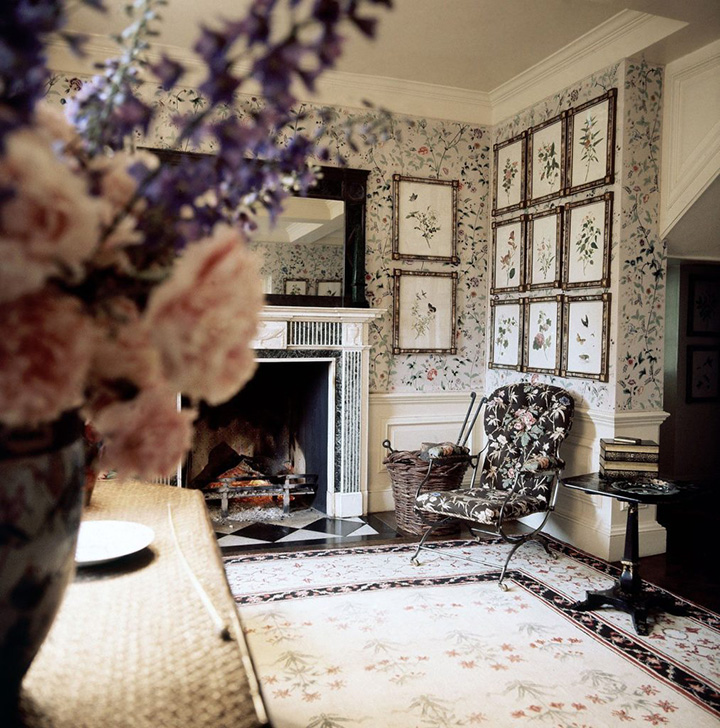
Lee brought a sense of sunlight and the garden into most rooms she made whether in damp England or the Upper East Side of Manhattan. It wasn’t so much that she was a masterful gardener or an arranger of flowers–although she took pleasure in both, it was that she wanted things to be gay, by which she meant light, bright and joyful.
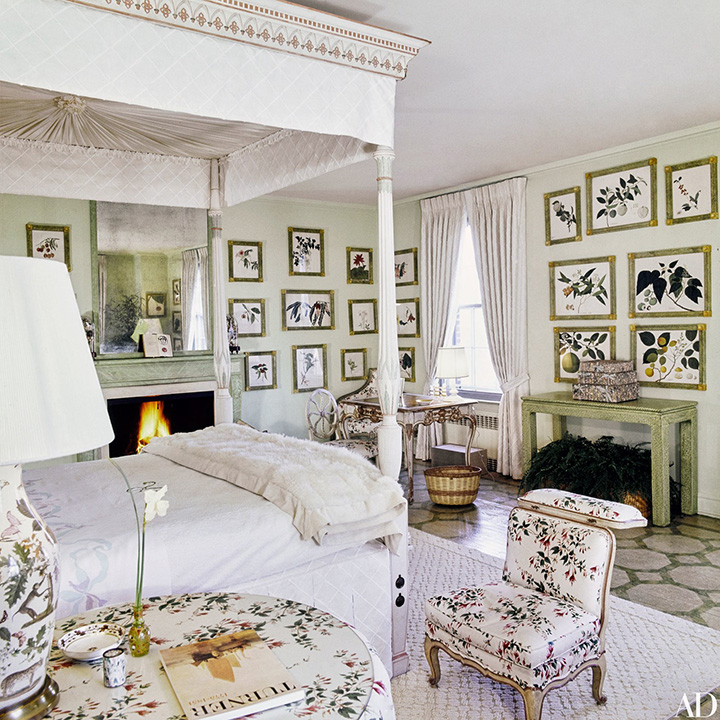
Lee described Turville Grange, the manor house in Oxfordshire she shared with her husband Prince Stanislaw Radziwill as ‘a house of flowers’. Every room, she said, “was covered with them.” It was the first house on which she collaborated with Renzo Mongiardino, the legendary Italian architect and set designer, and his brilliance with pattern and her passion for flowers made for truly magical rooms. The recipe, if there can be said to be one, often included walls enshrouded in a floral pattern– that extended three-dimensionally into the room on the curtains and onto some of the upholstered furniture–and on which were hung a series of botanicals. (She had a set of 18th century English watercolors and another of 19th century Anglo Indian paintings that moved with her from house to house.). On the floors would be jardinieres and pots and on the tables baskets and vases of plants, flowers or flowering plants, each chosen to highlight and connect back to a color in the walls. There were dogs and children as well, and in one room, live birds. This variety brought the rooms to life, as if vines and flowers were commingling in some idealized garden.
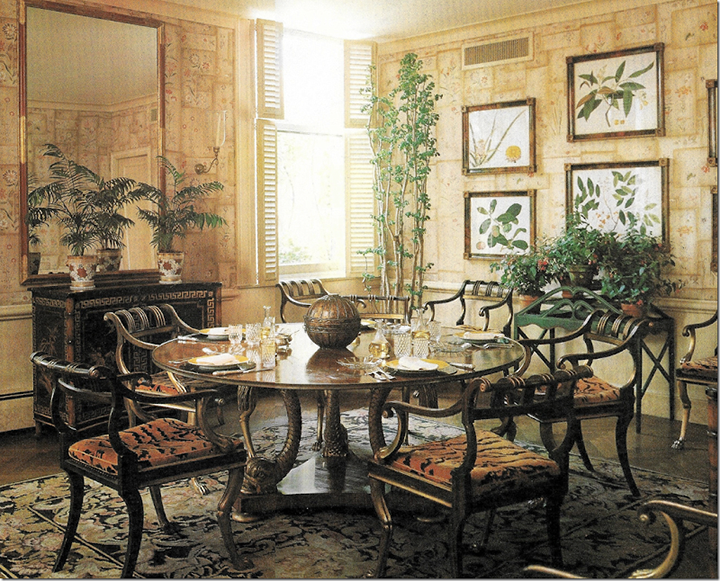
Lee was known also for some deeply dramatic rooms like the dining room Mongiardino covered with Sicilian scarves onto which the artist Lila di Nobili painted vines and blossoms or the sitting room in which every inch was draped in Indian block printed fabrics.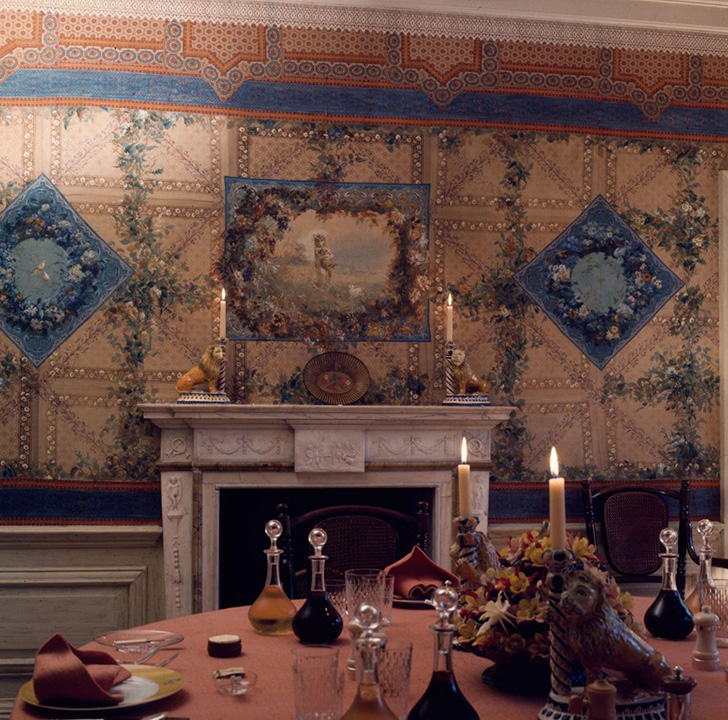
But Lee also made other rooms, often painted white, in which sunlight seemed primary. In her last apartment in Paris on the Avenue Montaigne, the silvery Paris light bathed the walls and uplifted the space. Here the roses in Versailles pots on the balcony, the botanicals on the wall, the peony pink sofa and the great vases of garden flowers, delivered weekly, were no longer elements tying back into the room, they were the room.
